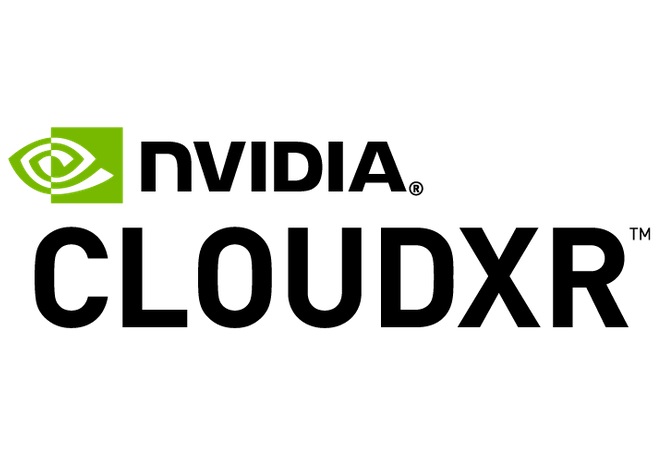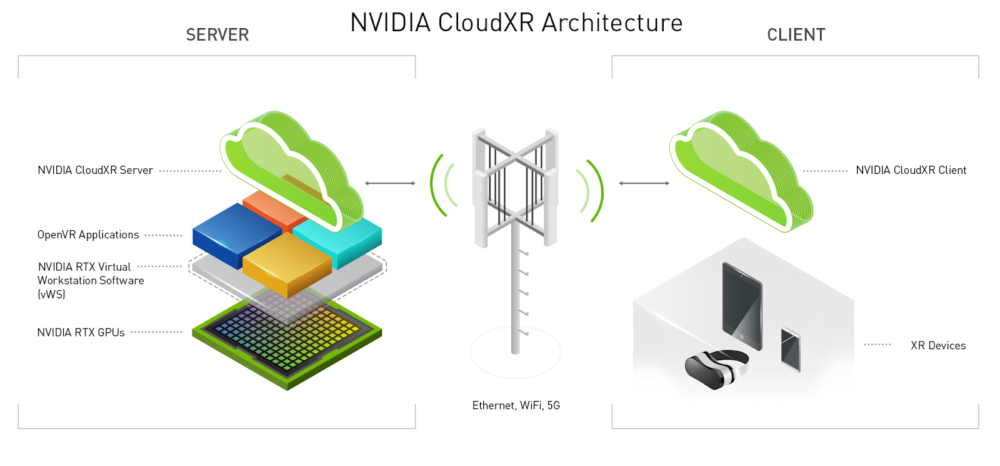
In Augmented Reality, Virtual Reality and Mixed Reality News
April 16, 2021 – This week at GPU Technology Conference (GTC) NVIDIA announced several updates to its NVIDIA CloudXR platform. CloudXR is an advanced technology that provides XR (collective term for augmented, virtual and mixed realities) users with both the performance of NVIDIA GPUs, as well as the mobility of untethered all-in-one head-mounted displays. The platform is designed to stream all kinds of XR content from any server to any device, without a need to be physically connected to a workstation.
With each GTC, NVIDIA has introduced new technologies and software development kits that have helped developers to create XR content and experiences. This year’s GTC was no different, with the company making several announcements, including a new release for CloudXR that adds support for iOS, the release of a new version of Variable Rate Supersampling (VRSS) to improve visual performance, and the release of CloudXR 2.1, which will add support for Apple iOS AR devices, including iPads and iPhones.
With 5G networks rolling out, streaming XR over 5G from the cloud has the potential to significantly enhance workflows across industries, according to NVIDIA. However, the company states that the main challenge with delivering XR from the cloud is latency — for people to have a great VR experience, they have to maintain 20ms motion-to-photon latency.
Therefore, in order to deliver the best cloud streaming experience, NVIDIA has fine-tuned CloudXR by bringing CloudXR streaming to cloud service providers, and has announced that CloudXR is now available on Amazon Marketplace as an Amazon Machine Image (AMI).The CloudXR platform will also be available on NVIDIA GPU-powered virtual machine instances on Microsoft’s Azure cloud platform. Additionally, Google presented a session that showcased CloudXR running on a Google Cloud instance at GTC.

NVIDIA has also collaborated with Magic Leap on a CloudXR integration, which the companies state will provide “a great step forward for spatial computing and an advanced solution that brings many benefits to enterprise customers.”
Additionally, NVIDIA has updated its Variable Rate Supersampling (VRSS) solution. The first version of VRSS supported fixed foveated rendering in the center of the screen. The latest version, VRSS 2, integrates dynamic gaze tracking in order to move the process of foveated rendering to the point at which a user is looking.
NVIDIA stated that these advances in XR technology are helping to pave the way for a solution that will allow users to learn, work, collaborate or play with others in a highly realistic immersive environment. The CloudXR iOS integration will soon be available in ‘NVIDIA Omniverse’, a collaboration and simulation platform that streamlines 3D production pipelines (currently in open beta).
With Omniverse, teams can simultaneously collaborate across content creation applications in a shared virtual space. With the upcoming CloudXR 2.1 release, Omniverse users will be able stream specific AR solutions using their iOS tablets and phones.
For more information on NVIDIA’s announcements at GTC this week and to watch a replay of the full GTC keynote address by NVIDIA CEO Jensen Huang, click here.
Image credit: NVIDIA
About the author
Sam is the Founder and Managing Editor of Auganix. With a background in research and report writing, he has been covering XR industry news for the past seven years.
